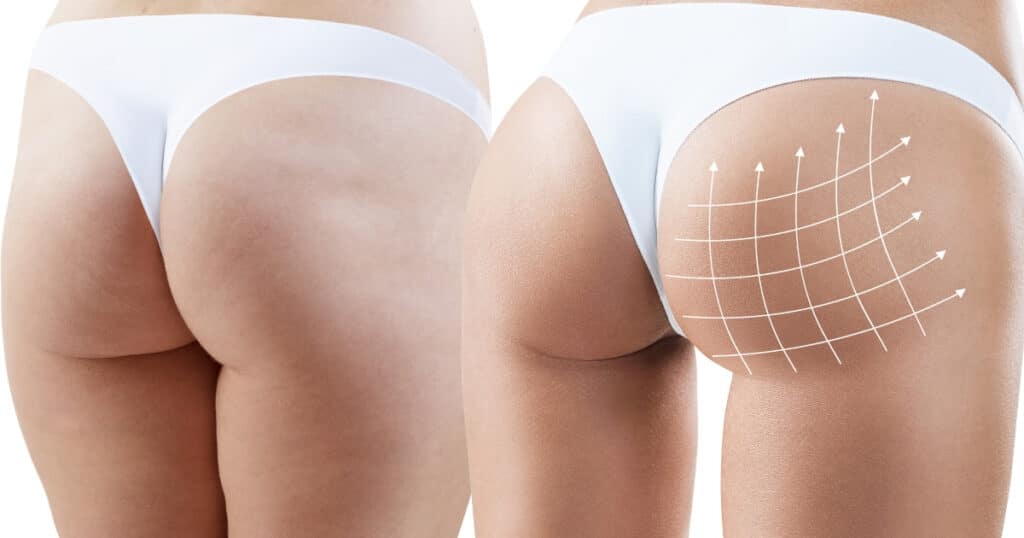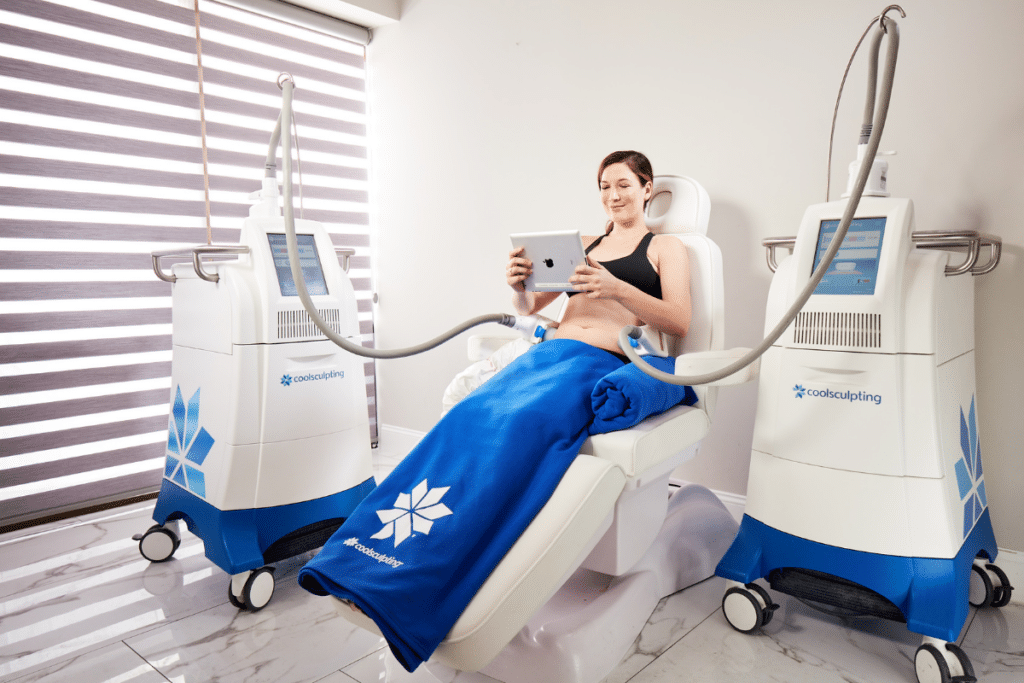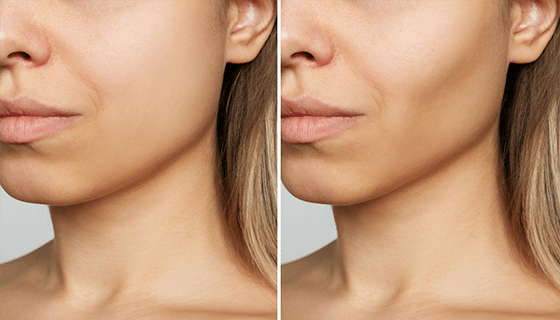Ultrasound-guided BBL is changing the game in cosmetic enhancement and body contouring with improved liposuction results, fat removal, and butt implants. This innovative technique enhances precision and safety during the ultrasound guided BBL procedures, helping surgeons with fat injection through ultrasound imaging. By using ultrasound technology, surgeons can visualize the anatomy in real-time during the traditional bbl procedure for the butt. This reduces risks and improves outcomes for patients.
The result? A more natural-looking enhancement with less downtime. Many people are curious about how this ultrasound guided bbl procedure works and its benefits, including ultrasound guided bbl enhanced safety, but also how it relates to butt and ultrasound imaging. Understanding the ultrasound guided bbl procedure can help you make informed decisions about your butt goals, especially considering the significant safety benefits ultrasound technology offers and the ultrasound guided bbl enhanced safety. If you’re considering a BBL butt, knowing about ultrasound guidance is essential. It’s time to dive into what makes this ultrasound guided bbl approach stand out in the bbl procedure of cosmetic surgery.
Understanding the Brazilian Butt Lift
Definition
A Brazilian Butt Lift (BBL) is a cosmetic procedure. It enhances the size and shape of the buttocks through ultrasound guided bbl fat transfer. This procedure has gained popularity worldwide. Many people desire fuller, more rounded buttocks for aesthetic reasons, including ultrasound guided bbl.
Fat Harvesting
Fat is harvested from various areas of the body. Common sites for ultrasound guided bbl include the abdomen, flanks, back folds, and thighs. Surgeons use liposuction to remove unwanted fat. This method minimizes scarring and helps contour the body. The harvested fat is then prepared for injection.
Fat Purification
After harvesting, the fat needs purification. Surgeons process the fat using ultrasound guided techniques to remove impurities and excess fluids. This step ensures only healthy fat cells are used for injection. The purified fat is crucial for successful results.
Injection Process
Surgeons inject the purified fat into the buttocks. They do this using specialized techniques to ensure even distribution. The goal is to achieve a fuller, rounder appearance. Each injection targets specific areas within the gluteal muscle and fascia. This precision helps create natural-looking results.
Recovery and Results
Recovery after a BBL varies by individual. Patients may experience swelling and discomfort in the treated areas. It’s essential to follow post-operative instructions closely. Avoid sitting directly on the buttocks for several weeks. This allows the injected fat to settle properly.
Results become noticeable after swelling subsides, usually within a few months. The final shape of the buttocks improves as healing progresses. Many patients report satisfaction with their enhanced appearance.
Safety Considerations
Like any surgery, a BBL carries risks. Potential complications include infection, blood clots, or fat embolism. Choosing a qualified surgeon is vital for safety and success. Research credentials and patient reviews before making a decision.
Global Popularity
The BBL has gained immense popularity worldwide since its rise in the early 2000s. Social media has played a significant role in this trend. Celebrities showcasing their curves have influenced many people’s desires for this procedure.
Traditional BBL vs. Ultrasound-Guided BBL
Procedure Comparison
Traditional BBL relies heavily on the surgeon’s experience and tactile feedback. Surgeons must depend on their skills to determine the correct placement of fat. This method can lead to variations in results due to subjective judgment.
Ultrasound-guided BBL changes this approach by using real-time imaging. Surgeons can visualize the tissue layers during the procedure. This technology allows for more precise fat placement, leading to improved outcomes.
Precision and Safety
In traditional BBL, there is a risk of injecting fat into the wrong tissue layers. This can result in complications such as fat necrosis or uneven results. The reliance on feel alone may lead to errors that affect the patient’s appearance.
With ultrasound-guided BBL, surgeons have visual confirmation of fat placement. They can see exactly where the fat is going during the injection process. This increased precision enhances safety by ensuring that fat is injected correctly.
Complication Reduction
Ultrasound-guided BBL significantly reduces the risk of complications. By ensuring proper fat placement, it minimizes issues related to incorrect injections. Patients experience fewer side effects and better overall results.
Surgeons can also monitor blood vessels in real time with ultrasound guidance. This helps avoid damage to important structures during the procedure. As a result, patients have a lower chance of experiencing adverse effects.
Patient Experience
Many patients report feeling more comfortable with ultrasound-guided BBL. The use of advanced technology provides reassurance about safety and effectiveness. Knowing that surgeons can visualize the process often eases concerns about potential risks.
The recovery process may also be smoother for patients who undergo ultrasound-guided procedures. Reduced complications can lead to less downtime and quicker healing. Patients appreciate faster return to their daily activities.
Future Trends
As technology advances, more clinics adopt ultrasound-guided techniques for BBL procedures. This trend reflects a growing emphasis on patient safety and surgical precision. Future developments may further enhance these methods, leading to even better outcomes.
Surgeons are likely to continue improving their skills with this technology. Training programs will evolve to include ultrasound techniques as standard practice. This shift will benefit both practitioners and patients alike.
How Ultrasound Technology Works in BBL
Real-Time Imaging
Ultrasound technology plays a crucial role in the Brazilian Butt Lift (BBL) procedure. It provides real-time imaging during the surgery. Surgeons use an ultrasound machine to visualize the patient’s anatomy as they work. This technology allows them to see what is happening beneath the skin.
Surgeons can monitor the fat injection process closely. They receive immediate feedback on where the fat is being placed. This helps them make adjustments if necessary. The ability to see internal structures improves precision. It reduces the risk of complications associated with traditional methods.
Correct Fat Placement
Ultrasound imaging ensures that fat is injected into the correct soft tissue compartment. This is vital for achieving optimal results. Injecting fat into the wrong area can lead to issues such as asymmetry or complications.
Using ultrasound, surgeons can avoid deep gluteal muscles. They target only the superficial layers of tissue. This minimizes damage to important structures and enhances patient safety. The accuracy of ultrasound-guided techniques leads to better overall outcomes.
High-Frequency Sound Waves
High-frequency sound waves create detailed images of internal structures. These sound waves penetrate the body and bounce back, producing clear ultrasound images. Surgeons interpret these images to guide their actions during the procedure.
The clarity of these images aids in accurate fat placement. It allows surgeons to visualize blood vessels and nerves, reducing risks. By avoiding these critical areas, they ensure a smoother recovery for patients.
Ultrasound technology also helps in assessing fat viability post-injection. Surgeons can evaluate how well the fat integrates into surrounding tissues over time.
Benefits of Ultrasound Guidance
- Enhanced Safety: Reduced risk of complications.
- Improved Precision: Accurate fat placement.
- Better Outcomes: Higher satisfaction rates among patients.
- Real-Time Feedback: Immediate adjustments possible during surgery.
Surgeons who utilize ultrasound-guided BBL report greater confidence in their work. Patients benefit from fewer side effects and improved aesthetic results.
Benefits of Ultrasound in BBL Procedures
Enhanced Safety
Ultrasound technology significantly improves the safety of BBL procedures. It helps surgeons visualize the anatomy beneath the skin. This guidance allows for a more precise fat transfer, reducing risks associated with the procedure. One major risk is pulmonary fat embolism, which can occur when fat enters the bloodstream. The use of ultrasound minimizes this risk by ensuring that fat is injected into safe areas. This advancement leads to safer outcomes for patients.
Regulatory bodies in some states recognize these benefits. For example, Florida requires the use of ultrasound during BBL surgeries. Such regulations highlight the importance of patient safety and the effectiveness of this technology.
Improved Accuracy
The accuracy provided by ultrasound is another key benefit. Surgeons can see where they are placing fat during the procedure. This visibility ensures that fat is transferred to optimal locations in the body. As a result, patients receive better aesthetic results.
With enhanced precision, surgeons can avoid injecting fat into areas that may cause complications. Accurate placement leads to a more natural-looking enhancement. Patients often report higher satisfaction levels due to these improved outcomes.
Regulatory Compliance
Certain states have established regulations regarding the use of ultrasound in BBL procedures. Florida is one such state that mandates this technology for safety reasons. These regulations help standardize practices among surgeons.
Surgeons must comply with these guidelines to ensure patient safety. By following these rules, they demonstrate their commitment to using advanced techniques that protect patients during surgery.
Patient Education
Patients should be informed about the benefits of ultrasound-guided BBL procedures. Understanding how this technology works can alleviate concerns about safety and effectiveness. Knowledge empowers patients to make informed choices about their surgeries.
Surgeons should take time to explain the process and its advantages. Clear communication builds trust between patients and medical professionals. It also encourages patients to ask questions and express any worries they may have.
Safety Improvements with Ultrasound-Guided BBL
Enhanced Safety
Ultrasound-guided BBL offers enhanced safety for patients. This technology significantly reduces the risk of fat entering blood vessels. Fat embolisms can lead to serious complications, including respiratory distress and even death. By using ultrasound, surgeons can visualize the anatomy in real-time. This allows them to avoid major blood vessels during fat injections.
Surgeons can identify the subcutaneous fat layer clearly. They can see where fat deposits are located and ensure that injections occur in safe areas. This method decreases the likelihood of complications that arise from traditional techniques.
Improved Accuracy
Real-time imaging provides improved accuracy in fat placement. Surgeons can monitor their movements as they inject purified fat into specific areas. This precision ensures that fat is placed in the correct compartment within the body. It also prevents deep muscle injections, which can cause unwanted effects.
Fat purification is crucial before injections. Purified fat has fewer impurities, leading to better results and lower risks. The use of ultrasound technology further enhances this process by ensuring that only the best quality donor fat is used.
Cosmetic Surgeon Expertise
Selecting a qualified cosmetic surgeon is vital for successful outcomes. A double board-certified surgeon has extensive training in both cosmetic surgery and related fields. This expertise allows them to utilize ultrasound-guided techniques effectively.
Patients should research their surgeon’s background and experience with ultrasound-guided BBL procedures. A skilled surgeon will be familiar with the nuances of this technique and how to maximize safety benefits.
Fat Compartment Understanding
Understanding fat compartments aids in effective fat placement. The body has various layers where fat resides, including superficial and deeper layers. Ultrasound helps surgeons navigate these layers accurately during a BBL procedure.
By targeting specific compartments, surgeons can achieve more natural-looking results. They can sculpt the buttocks while minimizing risks associated with improper fat placement.
The Procedure of Ultrasound-Guided BBL
Fat Harvesting
The ultrasound-guided BBL procedure begins with fat harvesting. Skilled BBL surgeons use liposuction to remove unwanted fat from the body. Common liposuction sites include the abdomen, thighs, and flanks. Surgeons insert a thin tube called a cannula into these areas. They then suction out the fat. This process creates a smoother contour and provides the necessary fat for transfer.
After harvesting, the next step is crucial. The harvested fat must be purified before injection.
Fat Purification
Surgeons place the extracted fat into a centrifuge. This machine spins rapidly to separate the fat cells from fluids and other impurities. The purification process ensures only high-quality fat grafts are used. Clean fat has a higher survival rate once injected into the buttocks. This step is vital for achieving optimal results in the BBL surgeries.
Once purified, the fat is ready for injection into the desired area.
Ultrasound Guidance
Ultrasound guidance plays a significant role in this procedure. Surgeons utilize an ultrasound scan to visualize the anatomy of the buttocks. This technology allows them to see where they are placing the fat injections. With ultrasound guidance, they can avoid blood vessels and nerves. This reduces risks of complications and enhances safety during surgery.
During the injection phase, surgeons carefully inject small amounts of fat into specific layers of tissue in the buttocks. They monitor placement in real-time using ultrasound images. This precision helps ensure even distribution of fat throughout the area.
Benefits of Ultrasound Guidance
The use of ultrasound in BBL procedures offers several advantages. First, it increases accuracy in placement, leading to better aesthetic outcomes. Second, it minimizes trauma to surrounding tissues, which can lead to less bruising and swelling post-surgery. Third, patients often experience faster recovery times due to reduced complications.
Surgeons report that patients benefit from improved overall satisfaction with their results when ultrasound guidance is used during cosmetic surgery.
Recovery and Expected Results
Typical Recovery
Patients will experience a typical recovery period after ultrasound-guided BBL. Initial swelling and bruising are common in the first few days. These symptoms usually peak within 48 hours. Discomfort may occur, but it often subsides quickly.
Most patients return to light activities within a week. Full recovery can take several weeks. During this time, it’s crucial to monitor any changes in the body.
Post-Operative Care
Post-operative care is vital for optimal outcomes. Avoid sitting directly on the buttocks for at least two weeks. This practice helps protect the newly injected fat cells. Using a special cushion can aid in comfort during this period.
Patients should also avoid strenuous activities for four to six weeks. This includes heavy lifting and intense workouts. Following these guidelines helps ensure better results from the procedure.
Expected Results Timeline
Final results from the ultrasound-guided BBL take time to develop. Swelling gradually decreases over several months. Most patients see significant improvements by three months post-surgery. However, complete results may not be visible until six months later.
The harvested fat needs time to settle into the tissue. This process is essential for achieving desired outcomes. Patience is key as the body adjusts and heals.
Factors Influencing Outcomes
Several factors affect patient outcomes after surgery. Individual healing rates vary among patients. Lifestyle choices, such as diet and exercise, play a role too. Maintaining a stable weight is important for preserving results.
Surgeon expertise also impacts performance and results. Choosing a qualified surgeon enhances accuracy during the procedure. Proper technique ensures that fat is placed in areas with good blood supply.
Risks and Considerations
Understanding risks is crucial before undergoing surgery. Potential complications include infection or uneven results. Discussing these risks with a healthcare provider can help manage expectations.
Regulatory compliance is another important aspect of the procedure. Ensuring that all practices meet safety standards protects patient health.
In summary, recovery from ultrasound-guided BBL requires careful attention to post-operative care and patience for results to manifest fully. By following recommended guidelines and consulting with medical professionals, patients can achieve their aesthetic goals effectively.
Key Considerations for Prospective Patients
Patient Health
Patients should be in good health before undergoing any procedure. This includes having no serious medical conditions. Patient safety is the top priority during a BBL. Those with chronic illnesses may face higher risks.
Realistic expectations are also essential. Some patients hope for dramatic changes. However, results can vary based on individual factors. Understanding this can lead to greater satisfaction after the procedure.
Fat Deposits
Surgeons require sufficient fat deposits for a successful transfer. Candidates should have enough fat available in specific areas of their body. A BMI of 30 or below is often recommended for optimal results. This ensures that there is adequate fat for harvesting and transferring.
Patients should assess their body composition beforehand. This can help them understand if they qualify for the procedure. Consulting with a qualified surgeon can provide clarity on this matter.
Consultation Discussion
During the consultation, patients must discuss their aesthetic goals with their surgeon. Clear communication helps align expectations with what is achievable. Surgeons can provide insights on the best approaches to meet those goals.
Overall health should also be addressed in these discussions. Surgeons need to know about any medications being taken or past surgeries. This information helps in creating a safe treatment plan.

Complications Awareness
Understanding potential complications is crucial for all patients. Risks such as infection, blood clots, or asymmetry exist in every surgical procedure. Surgeons will explain these risks during the consultation.
Patients should ask questions about how these complications are managed. Knowing what to expect can ease anxiety and enhance understanding of the process.
Regulatory Requirements
Regulatory requirements play a vital role in ensuring patient safety during procedures like BBL. These guidelines help maintain high standards among surgeons and clinics. Patients should choose a certified facility that adheres to these regulations.
Checking credentials and experience of the surgeon is important too. This builds trust and confidence in the quality of care received.
Time Imaging
Time imaging is another consideration for prospective patients. Surgeons often use ultrasound-guided techniques to enhance precision during the procedure. This technology allows for better visualization of optimum areas for fat transfer.
Patients benefit from fewer complications when procedures are guided by advanced imaging methods. Discussing these technologies with the surgeon can help patients feel more informed about their options.
Consultation and Next Steps
Scheduling Consultation
Prospective patients should schedule a consultation with a board-certified plastic surgeon. Look for a surgeon who has specific experience in ultrasound-guided BBL procedures. This expertise is essential for ensuring safety and achieving desired results.
During the consultation, the surgeon will assess your body type and discuss your goals. They will explain how ultrasound technology helps in accurately placing fat during the transfer process. This method reduces risks associated with traditional techniques.
Preparing Questions
Prepare questions to ask during your meeting. Inquire about the surgeon’s qualifications and experience with ultrasound-guided BBL. Ask how many procedures they have performed and what their success rate is.
It’s also important to discuss potential risks of the procedure. Understanding complications, such as infection or asymmetry, can help you make an informed decision. Clarifying these aspects will give you confidence in your choice of surgeon.
Pre-Operative Instructions
Understanding pre-operative instructions is crucial for optimal outcomes. The surgeon will provide detailed guidance on what to do before the procedure. Patients may need to avoid certain medications that can increase bleeding.
Surgeons often recommend stopping smoking several weeks prior to surgery. This step improves healing time and overall results. Following these instructions can significantly impact recovery.
Post-Operative Care
Post-operative care is just as important as pre-operative preparations. The surgeon will outline specific steps to follow after the procedure. These may include wearing compression garments to support healing and reduce swelling.
Patients should also plan for recovery time. Arrange for someone to assist you for at least the first few days post-surgery. This support can ease daily tasks while you focus on healing.
Keep track of any symptoms after surgery. Contact your surgeon if you notice unusual pain or swelling. Early intervention can prevent complications.
Importance of Expertise
Choosing an expert is essential for a successful ultrasound-guided BBL. Board-certified surgeons are trained in advanced techniques and safety protocols. Their knowledge helps minimize risks during fat transfer.
A qualified surgeon will also stay updated on current practices and technologies in cosmetic surgery. This commitment ensures patients receive the best care possible.
Pensamientos Finales
Ultrasound-guided BBL is a game-changer. It enhances safety and precision, giving you the best possible results. This innovative approach minimizes risks and maximizes satisfaction, making it a top choice for those considering body enhancement. You deserve to feel confident in your choices, and understanding these advancements helps you make informed decisions.
Take the next step in your journey. Consult with a qualified professional who can tailor the procedure to your needs. Embrace the benefits of ultrasound technology and transform your body safely. Your dream look is within reach; don’t wait any longer.
Frequently Asked Questions
What is an ultrasound-guided BBL?
Ultrasound-guided BBL uses advanced imaging technology to enhance the Brazilian Butt Lift procedure. It allows surgeons to visualize fat transfer locations, ensuring precision and improved outcomes.
How does ultrasound improve the BBL procedure?
Ultrasound enhances safety by providing real-time imaging. This minimizes risks of complications and optimizes fat placement for a more natural appearance.
Is ultrasound-guided BBL safer than traditional methods?
Yes, ultrasound-guided BBL is generally considered safer. The technology helps avoid blood vessels and nerves, reducing the risk of complications compared to traditional techniques.
What are the benefits of choosing ultrasound-guided BBL?
Benefits include increased precision, reduced recovery time, less discomfort, and overall enhanced aesthetic results. Patients often experience better outcomes with fewer side effects.
How long is the recovery period after an ultrasound-guided BBL?
Recovery typically takes about 1 to 2 weeks. Most patients can return to light activities within a few days but should avoid strenuous exercise for several weeks.
Who is a good candidate for ultrasound-guided BBL?
Ideal candidates are healthy individuals seeking enhanced buttock volume and shape. A consultation with a qualified surgeon will determine suitability based on specific goals and health conditions.
What should I expect during my consultation for ultrasound-guided BBL?
During your consultation, the surgeon will assess your health, discuss your goals, explain the procedure, and address any concerns. This ensures you have a clear understanding before proceeding.











